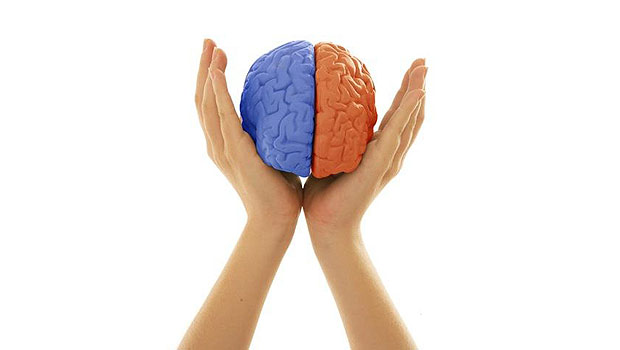Today, I shall present to you a few of the many incredible accomplishments achieved in the area of the brain, which were previously thought to be impossible feats. Here are some of the experiments of dedicated neuroscientists who went to advanced extents to help overcome brain damage effects and learning disabilities.
Michael Merzenich is an innovator neuroscientist who helped disabled individuals “sharpen [their] perception and memory; increase speed of thought; and heal learning problems” through redesigning their brains and activating neuro-plasticity. He and his colleagues set a training program, called Fast ForWord, to help children with language impairment and learning disabilities through brain exercises. The mental training helped them “distinguish short sounds from long [ones]” and identify easily confused consonant-vowel combinations. It was found that “Reward is an important feature of the program” because when the child is rewarded, his brain secretes brain-energizing neurotransmitters, such as dopamine and acetylcholine. Such enriching hormones help consolidate the brain to adapt to the newly mapped changes, resulting from continuous exercises. The Fast ForWord program produced other good results such as improvement in writing and communication skills and “sustained attention and focus” in dyslexic and autistic children through the rewiring of the brain.
In another area, scientist and pioneer Dr. Edward Taub of Birmingham, Alabama, made “spastic discoveries,” linking neuroscience to behaviorism, a concept until then refuted by mainstream medicine. He also managed to activate other parts of the brain than the stroke-damaged sections. Strokes result from blockages in certain areas of the brain with one or more blood clots or by hemorrhaging blood vessels, which cut off blood and oxygen supplies going to neurons, destroying brain cells and tissue. The stroke leaves the patient physically paralyzed along with
speech impairment.
Taub’s rehabilitation center, Taub Therapy Clinic, also applies techniques, which stimulate different areas of the brain with constraint-induced (CI) methods. The therapy revives the new area to make it substitute for the functions of the atrophied neurons, hence restoring the movement of the stricken limb and other motor skills. When the good arm is restricted (tied back), the incapacitated arm and hand slowly fend for themselves and start moving through the stimulation of the healthy part of the brain.
With CI therapy, stroke patients made rapid progress, working relentlessly from eight in the morning well into late afternoon. Some of the intensive manual work they engaged in was practicing washing and wiping tabletops and glass windows in circular motion exercises to harmonize their hand and arm movements. To reinforce brain wiring for hand and arm control, they exercised by stretching and resisting tough rubber bands with their lame fingers. They were also made to write the alphabetical letters with their incapable hands. They practiced putting hundreds of chips or pennies through the slit of a box as fast as possible. They persisted with the drill exercises until they perfected the motor skills of the affected hands and arms. As they learned new skills, neurons fired and connected and new brain masses were forged in the surviving sections of the brain consolidated by the rush of neurotransmitters and increased blood flow.
Taub’s CI therapy not only helps stroke patients but also children with cerebral palsy, as well as patients stricken with multiple sclerosis, spinal cord injuries, Parkinson’s disease and arthritis. What they require is motivation, concentration, long hours of repetitive movements and practice in order to recover their lost motor and language skills caused by disease or injury.
Magnetic resonance imaging (MRI) has demonstrated that the rewiring and remapping of the brain are very possible with exercise therapy and how the brain mass increases in size with the release of neurotransmitters and increased blood flow.
Doidge’s book explains that the human brain is constantly wiring and rewiring neurons as well as growing or shrinking according to information and activity fed or denied to it. So to keep our brains stimulated, sharp, focused and in good shape into old age, we need nutrients, essential fatty acids, phytochemicals, neurotransmitters and challenging mental arousal. Good results also require learning new skills, musical instruments or languages, solving puzzles and math problems, memorizing poetry, numbers or Quranic verses, gardening, playing cards and stimulating games and practicing physical training in order to stimulate the brain and increase secretions of acetylcholine and dopamine. Neurotransmitters are not only essential to learning, neuron signaling and brain mapping, but also slow down age-related cognitive decline. Bilingual people who frequently use more than one language appear to have brains that stay alert and sharp longer than their peers.
With the help of technology, diligent scientists and financial aid, it is possible to revive the plasticity of the brain, only if mainstream medicine starts accepting mental disabilities and infirmities as treatable disorders. With such collaboration, we can then give hope to the helpless and put an end to avoidable costs of financial assistance and physical and medical care, instead of making them burdens on society and governments. We should enhance the quality of their lives, preserve their dignity and give them the opportunity to live normally independent of family or society. The money and effort contributed to improve brain damage and disorders should be considered well spent and worth the time and every penny.
I would like to continue writing about the other success stories that are results of the unyielding will of patients and caretakers, but the present article has become quite long. Maybe some other time, I will revisit the subject, inshallah.
Meanwhile do not let your brain waste away when it is within your power to fuel it with information and newly acquired skills. You are a winner either way. You become smarter with more aptitude and you can stop age-related mental decline. Never say: “I can’t!” We all can if we try to reinvent ourselves!
N.B.: Individuals with medical conditions or on medication should consult their physicians when they decide to introduce anything new in their diet even if it is natural.
To read previous Health Solutions articles, visit:










